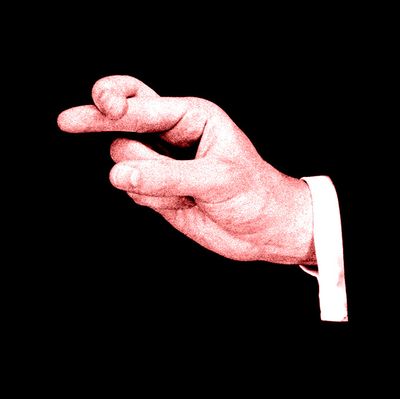
People, on the whole, are pretty bad at knowing when someone’s lying. And research has shown that “professional lie detectors” — like detectives, psychologists, and judges — are typically no better at detecting a lie than the rest of us.
On the one hand, that’s kind of a bummer for the people who hold those jobs, plus anyone who watches detective shows. But glass-half-full people, here’s another way of looking at it: You’re just as good as a pro at sniffing out liars! Plus, there are specific things you can do to improve your skills on this front. In the New York Times today, psychologist Edward Geiselman offers a tip.
Geiselman, a professor emeritus of psychology at the University of California, Los Angeles, is part of the team that developed a technique called cognitive interviewing, a police technique originally created as a way to help victims and witnesses better recall information. But as Geiselman explains, it can also be used to figure out when someone’s being dishonest:
By asking them to recount fine-grain particulars, you maximize the amount of mental energy they are expending on their story, thereby ratcheting up what psychologists call their “cognitive load.” As they try to reconstruct the circumstances leading up to the event in question, you can employ so-called extenders: “Really?” “Tell me more about that.” Many police departments use a more confession-oriented method with a distinctly parental tone (“I know you did it; now tell me why”). But researchers have begun asking if that approach leads to false confessions. A cognitive interviewer takes a different, more journalistic approach, gathering as much information as possible.
Do this by posing open-ended, or what Geiselman calls “expansion,” queries. A truthful person usually answers a follow-up question with additional details. A liar tends to stick with the same, bare-bones answers. … Instead, request the unexpected. Geiselman recommends asking someone to illustrate events with a pencil and paper or to retell the story starting at the end. A liar’s account will begin to break down.
In a 1985 paper in the Journal of Applied Psychology, Geiselman and his colleagues laid out the four main steps for cognitive interviewing in greater detail: “Reinstate the context,” thinking back to what the scene looked like, as well as your thoughts and feelings during the event in question; make sure to report every detail, even the ones you might think are unimportant; recall the events in different orders, working both backward, forward, and from various points in the middle; and change perspective, thinking through the experiences of other people on the scene.
The key to the technique’s success, Geiselman said, is leading a person to mental exhaustion. (As a former undercover CIA officer — in other words, someone who told detailed, elaborate lies for a living — explained on Reddit last week, it’s hard to get every part of a cover story straight.) Keeping track of all those various details while recounting the same thing in different ways “essentially puts them at the edge of their ability to function cognitively,” Geiselman told the Times.
So there you have it. Next time someone tells you a story that seems a little off, make them tell it again, in greater detail. And then backward. And then tell it like they’re someone else. And then draw it. Soon enough, you’ll either have the truth, or your friends will get annoyed and just stop telling you things altogether. Either way, no more lies.




